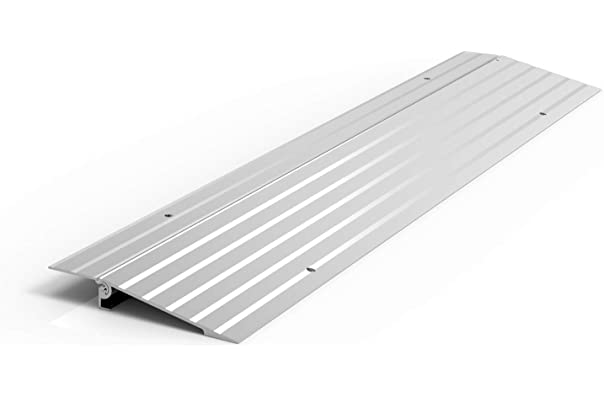
For families or people who have just switched to a wheelchair or scooter for mobility, wheelchair ramps for the home are usually among the first expenditures. A homeowner or renter who is unable to leave his or her house is isolated from and unable to participate actively in his or her community.
Aluminum threshold ramps for home exteriors come in a variety of forms. Look through the list below and click on the links for further information about buying a ramp.
How to Determine the Proper Slope & Width of Your Ramp
1. Divide the wheelchair ramp’s length by its height. The second figure in your ratio will be this. One is always the first number. If the ramp is 12 feet long and the rise is 2 feet, you would divide 12 by 2 to obtain 6, resulting in a 1 to 6 ratio. This means that for every foot you gain, you’ll need 6 feet of the ramp to reach your destination.
2. It’s also crucial to realize that two ramps with very different slopes might have the same slope. A 12-foot ramp with a 1-foot rise, for example, has a slope of 1 to 12, whereas a 120-foot ramp with a 10-foot rise has the same slope.
Different Types of Handicap Ramps on the Market
Wheelchairs, strollers, carts, and other wheeled items may readily reach steps, cars, and other elevated landings thanks to ramps. A ramp is a carefully engineered inclined plane that makes it easier for wheelchair and scooter users to maneuver about and access a building or vehicle.
Stairs from your garage into your house, doors with higher thresholds, vehicle thresholds such as for vans and SUVs, steps leading to front or rear entrance doors, and the threshold between the floor and shower in your bathroom are all common places where ramps are required.
Portable ramps, semi-permanent ramps, and permanent ramps are the three types of ramps.
A) Portable Ramps:
These ramps are lightweight and easy to transport from one location to another. This sturdy ramp allows wheelchairs and scooters to easily access steps, automobiles, and other low- to moderate-rise surfaces.
B) Semi-permanent Ramps:
These ramps are strong enough to survive a long time and maybe relocated from one location to another. These ramps may be used both indoors and outside.
C) Permanent ramps:
These are ramps that cannot be readily relocated and are typically used to get access to a building’s front and rear entrances.
D) Aluminum modular ramps:
These come in parts that may be linked together to fulfill your height and length needs. The benefit is that modules may be purchased in a variety of styles to suit your needs.
E) Steel ramps:
These are cost-effective and sturdy ramps with a powder-coated finish on all of their components, making them more durable.
F) Wooden ramps:
They add to the beauty of your patios and decks. They’ve been pressure treated to repel insects, mold, and decay, as well as survive a variety of climates.
Locate a Trustworthy Dealer
If you need a ramp for business or residential use, you may contact a prominent accessibility equipment provider in New Jersey, who offers a comprehensive range of high-quality ramps that improve accessibility. They make bespoke ramps to your specifications and also provide a fully equipped modular ramp kit with an installation manual so you may construct and install your own ramp.
Also Read: TRAITS OF A PROFESSIONAL VOCAL COACH.
Contents